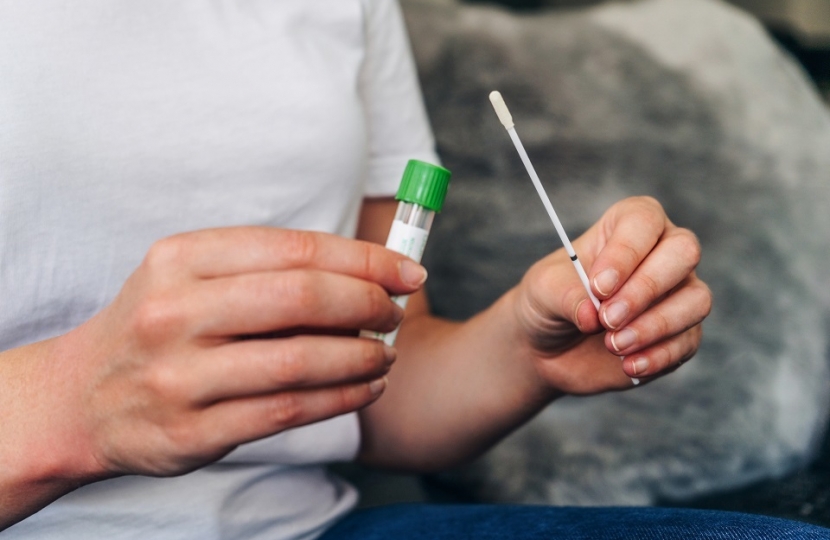
Care homes across the country will benefit from additional rapid testing to test staff twice a week to help protect residents and workers from the virus.
- Staff in all tiers will receive 2 rapid tests a week, in addition to the weekly PCR test
- Care homes in all tiers given access to £149 million grant to support roll out of rapid testing
- New grant will also help care homes in Tiers 1, 2 and 3 meet additional costs associated with visits, supporting residents to see friends and family
Staff will be asked to take rapid tests twice a week, in addition to the weekly PCR test they have already been receiving as part of urgent government action to protect those most at risk. A plan that has been accelerated in light of the new, more transmissible, strain of COVID-19. In the event of a positive test in a Tier 4 care home, all staff will additionally be tested daily for 7 days.
This will be supported by an additional £149 million to fund costs associated with testing staff, and to more safely support family visits in areas outside of Tier 4.
The money will pay for care home providers to set up safe testing areas, provide staff training and contribute towards staff time spent on administering and receiving the tests. This is in addition to the more than £1.1 billion Infection Control Fund and is supported by over 16 million rapid tests and 46 million items of personal protective equipment (PPE) delivered for free to care homes over the last month.
Health and Social Care Secretary Matt Hancock said:
We have worked throughout the pandemic to protect staff, and residents in care homes and today we are boosting rapid testing in care homes, with a further £149 million pounds to support that effort.
All those who work in care homes across England will receive 2 rapid tests a week, in addition to their weekly PCR test.
Visits to care homes can still take place in Tier 4 with arrangements such as substantial screens or visiting pods but, for the safety of loved ones, close-contact indoor visits supported by testing cannot take place in tier 4 areas.
Outside of Tier 4 areas friends and family are able to visit relatives in care homes that are not currently experiencing an outbreak if they receive a negative result prior to the visit, wear PPE and follow all other infection prevention and control measures.
This approach seeks to achieve the right balance between the increased risk of infection transmission and the clear benefits to the mental and physical health of residents and their families that visiting enables.
Minister for Care Helen Whately said:
Our priority is to keep care home residents and staff safe, and we have been working hard to make the most of our testing capacity to help people reunite with loved ones as safely as possible.
Now in the face of this new strain, which spreads much more quickly, we are increasing testing in all care homes to help protect those most at risk. This £149 million grant will give care homes the tools and support they need to test staff regularly and safely reunite families kept apart because of COVID-19.
Stopping staff movement in and between care settings is critical to minimise the risk of infection of COVID-19 and other viral illnesses. However, if care homes need to use staff who work in multiple locations in order to maintain safe staffing levels, rapid tests will help to manage the increased risk related to employing staff who are working in multiple settings.
The new strain transmits more easily than the previous variant but there is no evidence that it is more likely to cause severe disease or mortality.
Testing is only part of the approach and it’s essential visitors and staff wear PPE and follow all infection control methods to keep their loved ones, other residents and staff safe. Up to 1 in 3 people who have coronavirus have no symptoms and could be spreading it without realising it.
Care homes which are facing an outbreak will not be able to receive visitors, apart from in exceptional circumstances such as end of life.
Care homes will manage the number of visits to ensure they can enable safe visiting and the programme will be continuously reviewed.
The money will be made available early next year and will be distributed via local authorities. Allocations will also be announced early next year.
The grant will cover the infrastructure costs of the expanded testing programme including setting up testing areas and resource costs including gaining consent for tests, supervising the use of PPE and swab tests and then processing and logging the results.
